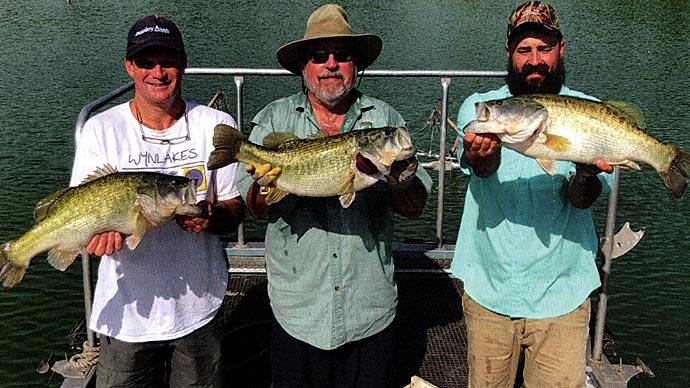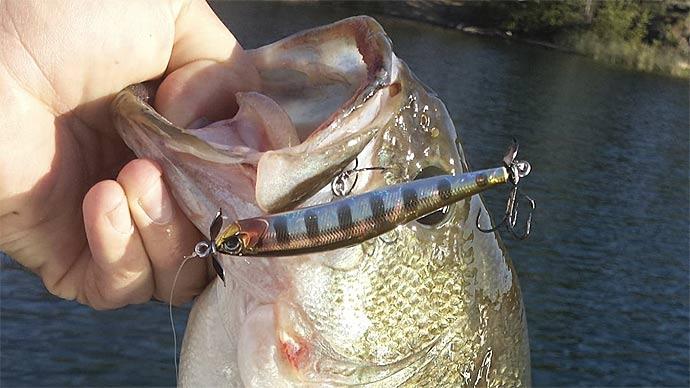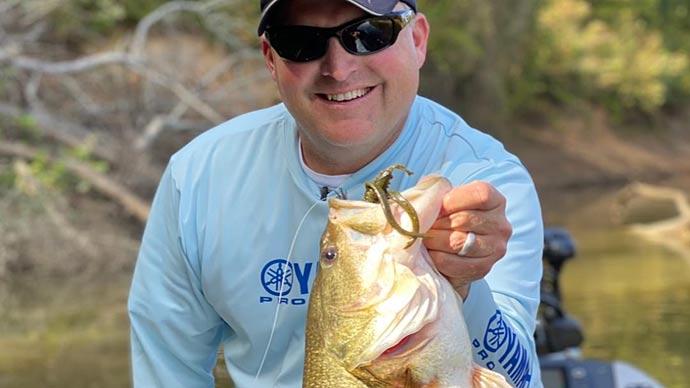Living in Sinaloa during the summer can best be described as living in a pizza oven. Daily temperatures soar upwards to as high as 130 degrees. The best means of survival is filling the freezer, locking the doors and windows, and cramming up the A/C.
Unfortunately, the bass don't have the same luxury. Their only means of dealing with the ever-increasing surface temperatures is to go deep. And deep they go, suspending in water depths from sixty to one hundred feet. Their metabolism slows, and they feed very little.
Then as the rain begins in July continuing into September, the cool mountain waters start to fill the lakes. The cloudy days help to keep the surface temperatures cooler. When the bass sense this cooling, they start to rise in search of food. Here in Sinaloa, the primary food source is the shad and the tilapia fry from the current spawn. The shad and the tilapia fry crowd the banks in shallow water, making easy targets for the hungry bass. Newly flooded grassy areas are excellent as they provide the bait fish's food chain.
This fall-feeding frenzy provides a perfect opportunity for the bass angler looking for fantastic topwater action or shallow/medium diving crankbait action. The "Bill Dance Fat-Free Shad" is still one of Sinaloa's most popular and effective lures. However, an angler would be remiss if his tackle box didn't boast a selection of spinnerbaits, poppers, and a medium diving rattle trap. A double-propeller silver torpedo lure has produced some of the biggest bass caught in Mexico. The surface water warms in the afternoon, and the bass will head for slightly deeper water. Hit the points and drop-offs with deeper divers. Also, this is the best time for your plastics. Lizards or shad in various colors work well. Chartreuse, Watermelon, Motor oil, and combinations of these colors seem to work best. White-colored swim baits also can be very effective.
As the water temperatures continue to drop, the inbound rivers slow. The bait fish and the bass will move up the canyons and into the shallow setbacks. This is the time to concentrate on the structure and the submerged brush. Most of the lakes in Sinaloa have a considerable amount of brush for the bass to stage their ambush on unsuspecting bait fish. Sinaloa grows the best supply of pucker brush than any other place in the world. You can look out your window while driving to the lakes. Acres and acres of pucker brush are all you will see. Well, it is this same type of brush that was flooded when the lakes filled.
Fishing the brush can be both rewarding and frustrating. Crankbaits and plastics work best. Many anglers have great success stories with Carolina rigs. Hooking the lunker is only the first step. Getting him to the boat is another. I genuinely believe that the grandfather bass run a naval boatman's mate school of knot tying for the young. If you give the bass half a chance, he will tie you up around a tree trunk, and the battle is over. Another problem is due to the high volume of fish caught in Sinaloa lakes, anglers become complacent, and their reaction time slows. When fishing for lunkers in the brush, you must turn his head toward the boat as soon as you set the hook. If you give him half a chance, he will beat you. Many anglers experienced in fishing our Sinaloa waters will go to the heavier line, up to twenty or twenty-five lb test with a stiffer pole. This may take a little of the sport out of the fishing, but it will increase your chances of getting your lunker to the boat.
If you are considering a fishing trip to Sinaloa, Mexico, October through December is an excellent time for lunker bass. The lakes are full, the foliage is green, and the weather is great. Also, the fish have had no fishing pressure for over four months. The major spawn is from January to March, so the bass are aggressively feeding and will increase their weight up to 20% in anticipation of the spawn.
Traveling to Mexico is easy. You don't even need a passport. You can grab your birth certificate, a notarized copy, and a photo ID and make your reservation.



